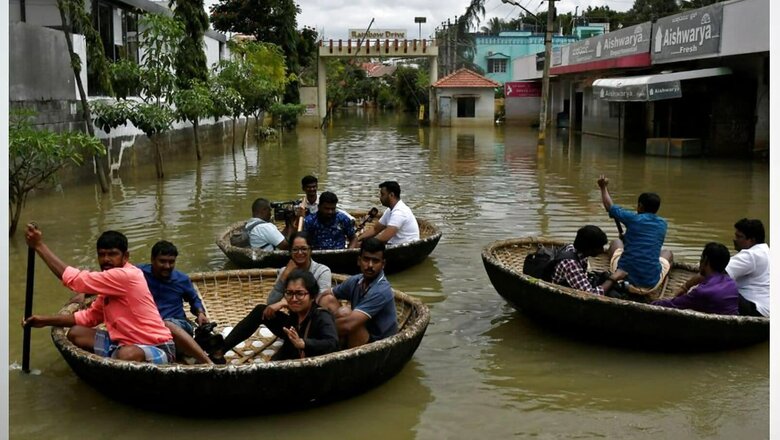
views
After a year of intense and erratic patterns of rainfall, a study has found that the increasing depth and height of clouds across the country is one of the reasons behind the sharp and short rain spells.
The study, published by the Advanced Centre for Atmospheric Radar Research, Cochin University of Science and Technology concluded that rainfall, especially on the west coast of the country, was becoming more “convective.” This essentially means that intense rain is being experienced by a particular region due to “deep thunder clouds, and the intensity of clouds.”
These clouds have been expanding over the west coast for the last 40 years and are therefore leading to high intensity, cloud-bust kind of rainfall in a span of just three to four hours, according to S Abhilash, Directory at Advanced Centre for Atmospheric Radar Research.
Although the study was primarily done across India’s west coast, Abhilash says, “convective rainfall” is becoming a regular weather feature in cities like Bengaluru, Pune, and other areas of north India. Recent landslides in Kerala and Uttarakhand are all caused due to this phenomenon.
In fact, extreme rainfall has tripled across central India since 1950, Dr Roxy Mathew Koli, a scientist from the Indian Institute of Tropical Meteorology told The Times of India. “These severe weather events result in large-scale floods across central and north Indian states,” Koli added.
This year’s monsoon season saw incessant and often unpredictable bouts of rain spells throughout the country. Throwing normal life out of gear, several cities witnessed severe waterlogging leading to delay in local train services, disruption of vehicular traffic and hindered electricity supplies.
In the last couple of weeks, parts of Bengaluru were battered by torrential rains causing flood-like situations in several areas. The city received 131.6 mm of rainfall on September 5, the highest since 2014, according to the India Meteorological Department.
In the worst affected areas, daily life came to a standstill, with most roads being inundated in water. While flood waters have begun to recede in some parts, the IMD has predicted more rainfall over parts of Karnataka in the next two days.
Heavy rains continued to lash Mumbai and its adjoining areas on Thursday, disrupting road traffic and suburban train services on the Central Railway (CR)’s Main Line due to waterlogging on tracks. The IMD had predicted heavy rainfall for Mumbai, along with heavy rainfall and thunderstorms for Raigad, Palghar and Thane districts, with wind speed of 40 to 50 on Friday.
Kerala has witnessed heavy showers in August, with several districts on the brink of flooding. The state government was forced to declare the closure of all schools.
Read all the Latest News India and Breaking News here


















Comments
0 comment